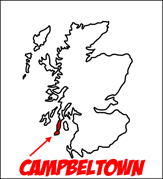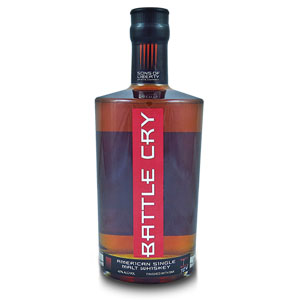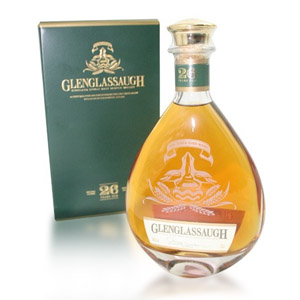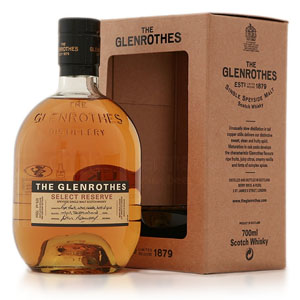People who have been around this market for awhile will probably remember Longrow C.V., and can rest assured that Longrow Peated is that same cult favorite in a new dress. To save myself some typing, you can read about Springbank and its convoluted distillation process below in “About the Distillery”. Unlike the Springbank-labelled bottles, Longrow is fully peated and aged in ex-bourbon without any sherry cask influence. It’s also not chill-filtered, has no added coloring (indeed it’s quite pale), and has no age statement. I’d place it somewhere around 9 years, but it’s hard to tell since it’s possible for a blend of ages to be used in NAS bottles.
Nose: Straightforward smoke, with slightly briny peat. Sweet undertones of vanilla cream soda and fresh hay, plus a strong lemon peel note. After a rest in the glass, the peat takes a back seat to the lemon.
Palate: Syrupy body. Mild tongue burn which quickly reveals earthy peat, slowly smoldering campfire smoke, sandalwood, white peppercorn, and lemon custard.
Finish: Long. The best parts of the peat continue through the finish, accompanied by the same lemon note. Lingering flavors of fresh earth and smoke are joined by menthol. There is only very little charcoal bitterness. The finish fades gracefully and slowly, but without further evolution.
With Water: A few drops of water initially mute the nose entirely (including all the peat), necessitating a rest in the glass. First, a very shy floral note emerges, then business as usual. It also seems to thin the body. Skip the water.
Overall: An elegant, refined peat shares equal billing with decadent lemon oil. While there is no mistaking this as anything but a fully peated malt, the peat is not as in-your-face as other peated standards. On one hand this means less street cred for braving the tongue-thrashing available in more popular whiskies. On the other hand, this means the peat is better integrated, and serves as a contrast rather than a focus. I’m not typically a fan of lemon-dominated whiskies, however, as the aromas sometimes verge towards cleaning-product.
I should note that this does not have many of the things I find fascinating about Springbank distillates. It is heavy, sure, but it lacks the oils and grunge that typify the spirit for me. Still, I can’t deny that it’s a well-balanced, well-crafted, and tasty peated malt. If you don’t mind the lemon, you’ll probably enjoy this thoroughly.
A note on price: Springbank’s brands (Springbank, Longrow, Hazelburn) are typically far less expensive in the UK and related markets. I generally find them to be very much worth their UK prices, and not quite worth their US prices. Try to get them via travel or when already placing an overseas order.


About The Distillery
Springbank is a composite of rarities. It is one of the very few distilleries that performs the entire distillation process from malting on-site (its own floor maltings) to bottling in its private bottling plant. In fact, it is the only fully self-sufficient distillery in Scotland. Located in Campbeltown on the lyrical Mull of Kintyre, it is also one of the few surviving distilleries (of three, with Glen Scotia and Glengyle) from a once-great region of Scotch distillation. In 1887 there were 21 distilleries in Campbeltown, and it was sometimes called “The Whisky City.” Hard times and a self-perpetrated degradation in quality (and thence, reputation) during the American period of Prohibition scoured the region, putting most distillers out of business.Springbank claims that hand-turned floor maltings (as opposed to pneumatic or machine-aerated commercial maltings), while labor-intensive, yield a malt that is better because it germinates more slowly. The distillery uses traditional worm tubs, a cast-iron mash tun, and employs mechanical ‘rummagers’ (to prevent a buildup of burnt deposits) in the copper stills, which are heated with a combination of steam and direct oil fire. Springbank uses three stills to create a 2.8-time (not triple) distillation. Now hold on, because this math is tricky: The first “wash” distillation produces so-called “low wines”, which are around 20% alcohol. A second distillation produces an intermediate distillate, which is in the neighborhood of 35% alcohol. A third still is charged with a solution of 80% of this double-distillate and 20% of the “low wines,” and a third distillation is performed. Thus, in the final spirit, around 80% of the volume has been triple-distilled, while around 20% of the volume has been double-distilled. Hence, 2.8x distillation. Phew! For a fantastic and in-depth guided tour of Springbank distillery, be sure to check out Ralfy’s visit (scroll down).
Springbank also makes Longrow (a peated malt) and (new in 2006) Hazelburn (unpeated, truly triple-distilled). These, along with the distillery’s flagship Springbank bottlings, are all non-chill-filtered, have no caramel coloring, and are reduced to bottling strength on-site with the same water used to produce the whisky. The water, like all Campbeltown whiskies, comes from the Crosshill Loch in the hills above the town, and is supplemented by a private well from a borehole drilled deep into the rock beneath the town. Note that the Springbank “CV” bottling, which is at a similar price-point, is purportedly a vatting of 6, 8, and 12 year-old malts (unverified), from different barrel finishes.










I just opened a bottle today. At the end I taste concentrated rose water. I need to try this again later.